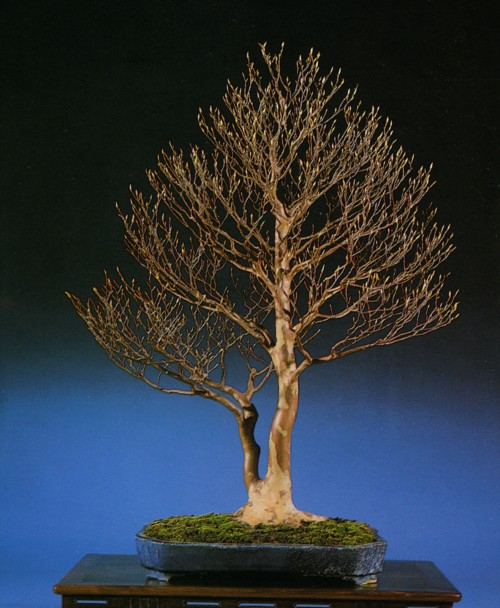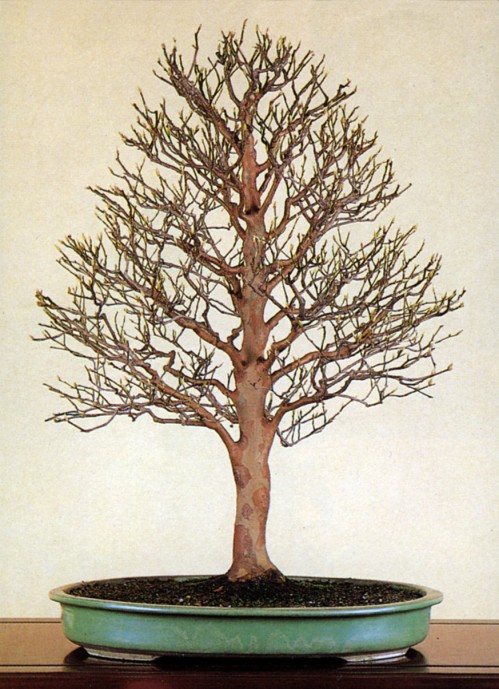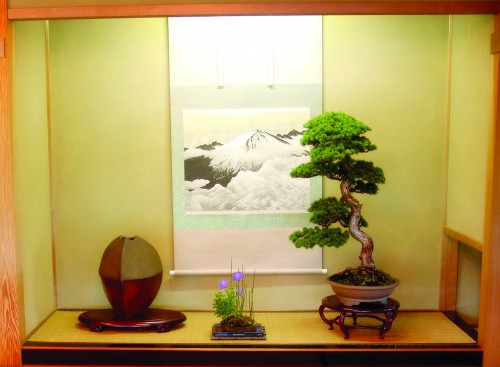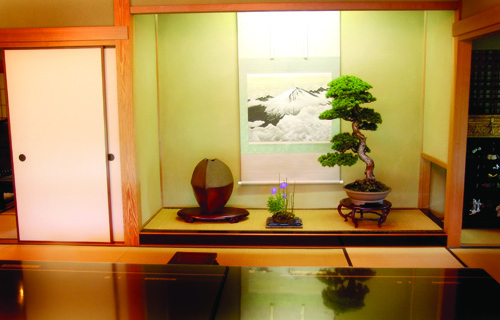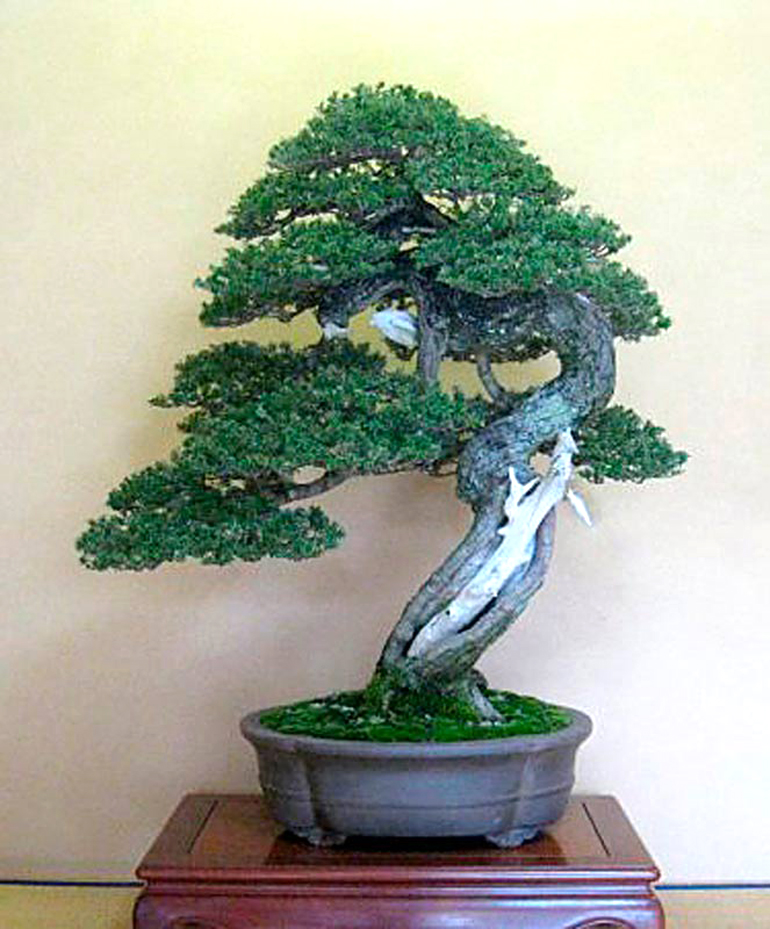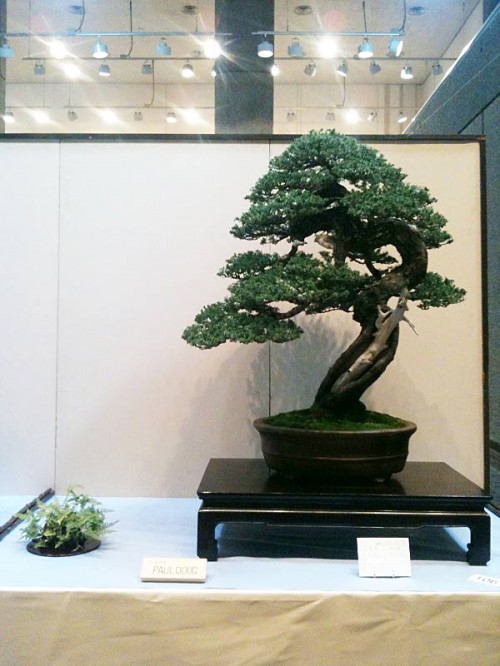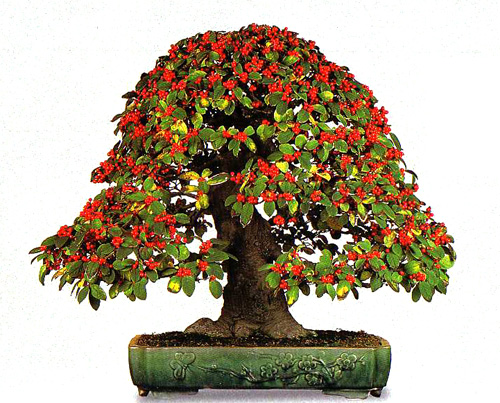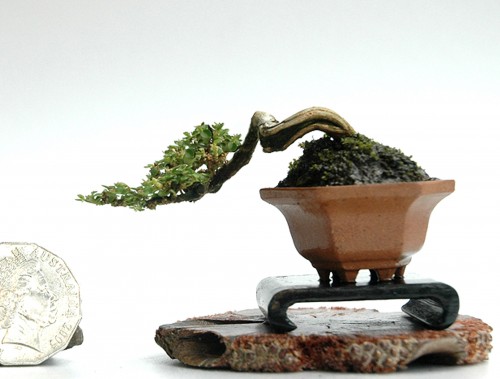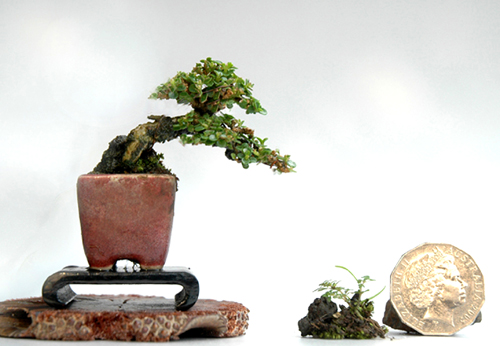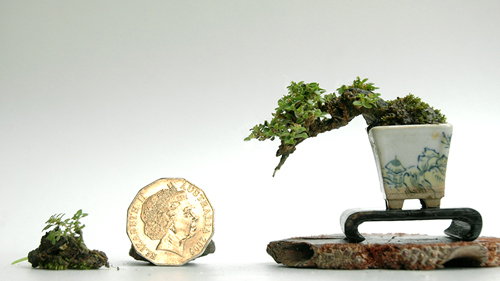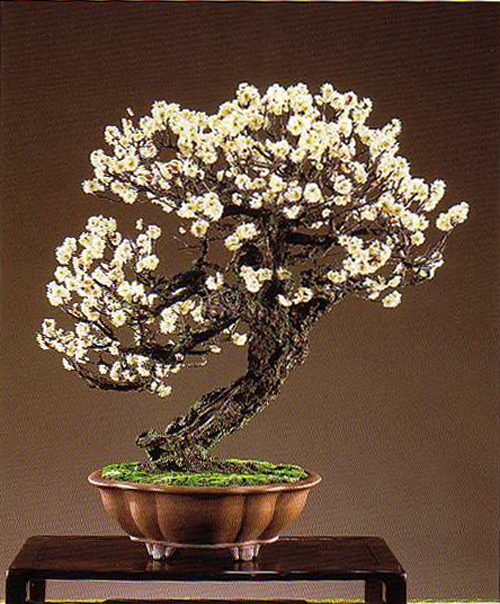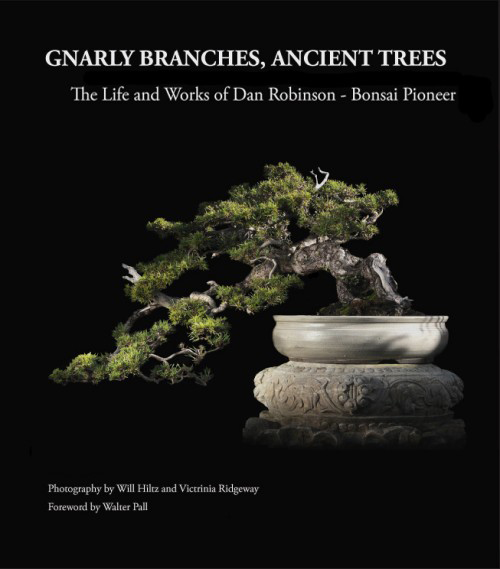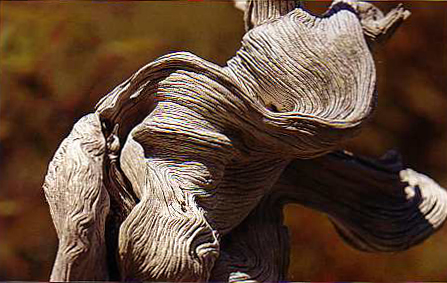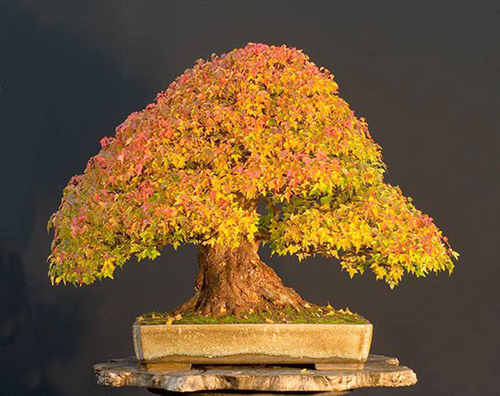
This remarkable Trident maple turned up on Bonsai Mania via facebook. It’s from the photo album of Alex Probst.
A little update (1/7/2011)
Now I know that this tree belongs to Walter Pall. I also know that it most likely was not photoshopped. My apologies to Walter.
Enhancing color
I realize that everyone’s monitor isn’t the same, but still, this looks like a case of photoshopping to enhance color, when color is the point of the photo. In this case it’s yellow that’s enhanced. You can tell by the yellowish trunk and the yellowish wooden slab that the pot rests on. The pot also has a yellow tinge, but if it were the only thing that did, you’d have to assume that that’s its natural color.
It doesn’t really need it
None of this is to say that this isn’t a remarkable tree. It clearly is, with its extraordinarily powerful well tapered trunk and near perfect, natural looking nebari (not over the top like some maple nebari, but rather flowing naturally from the soil to the lower trunk). The overall shape of the canopy is excellent too, as is the choice of the pot (it’s a temporary display pot, too small to grow the tree in for very long).
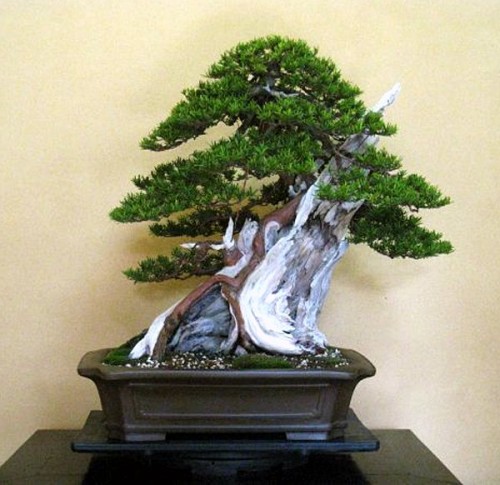
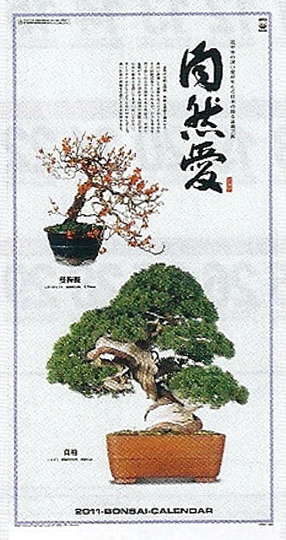 2011 is closing in. Don’t be caught without your
2011 is closing in. Don’t be caught without your 
